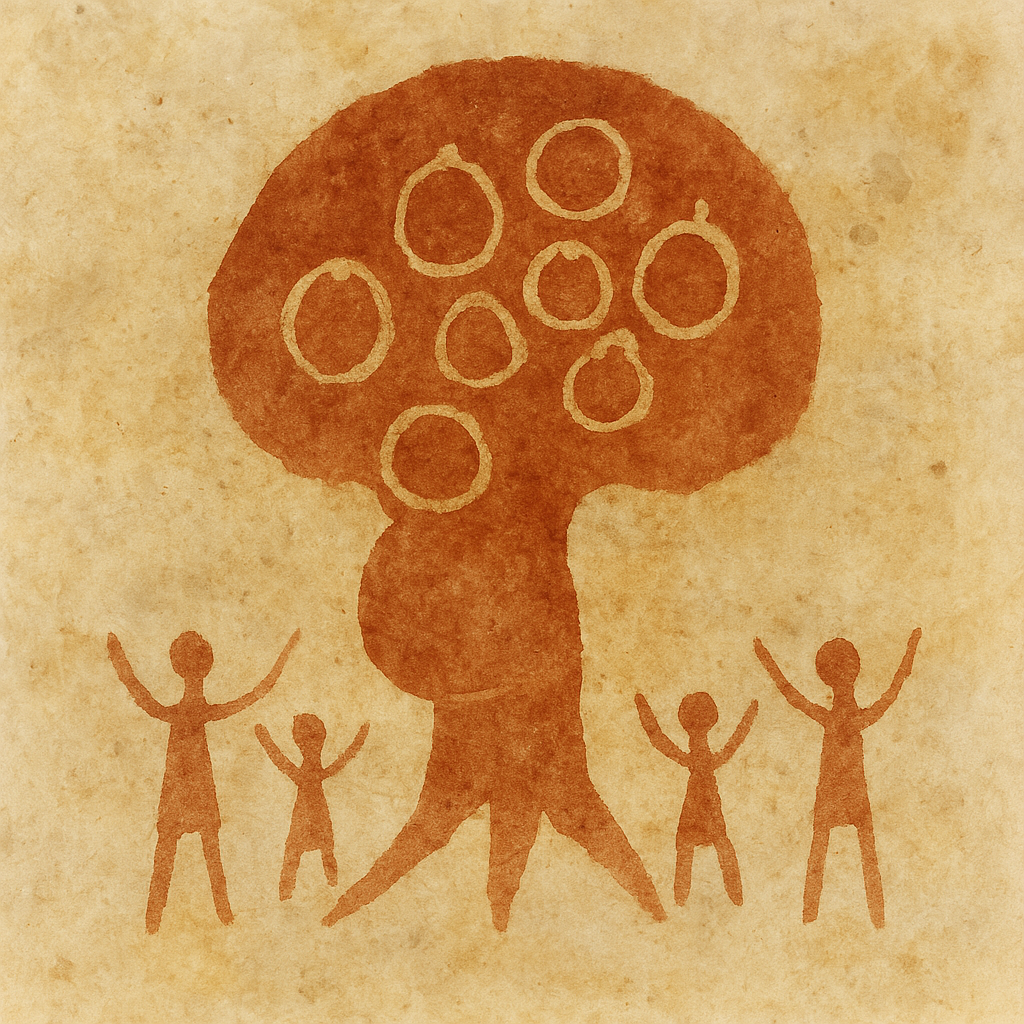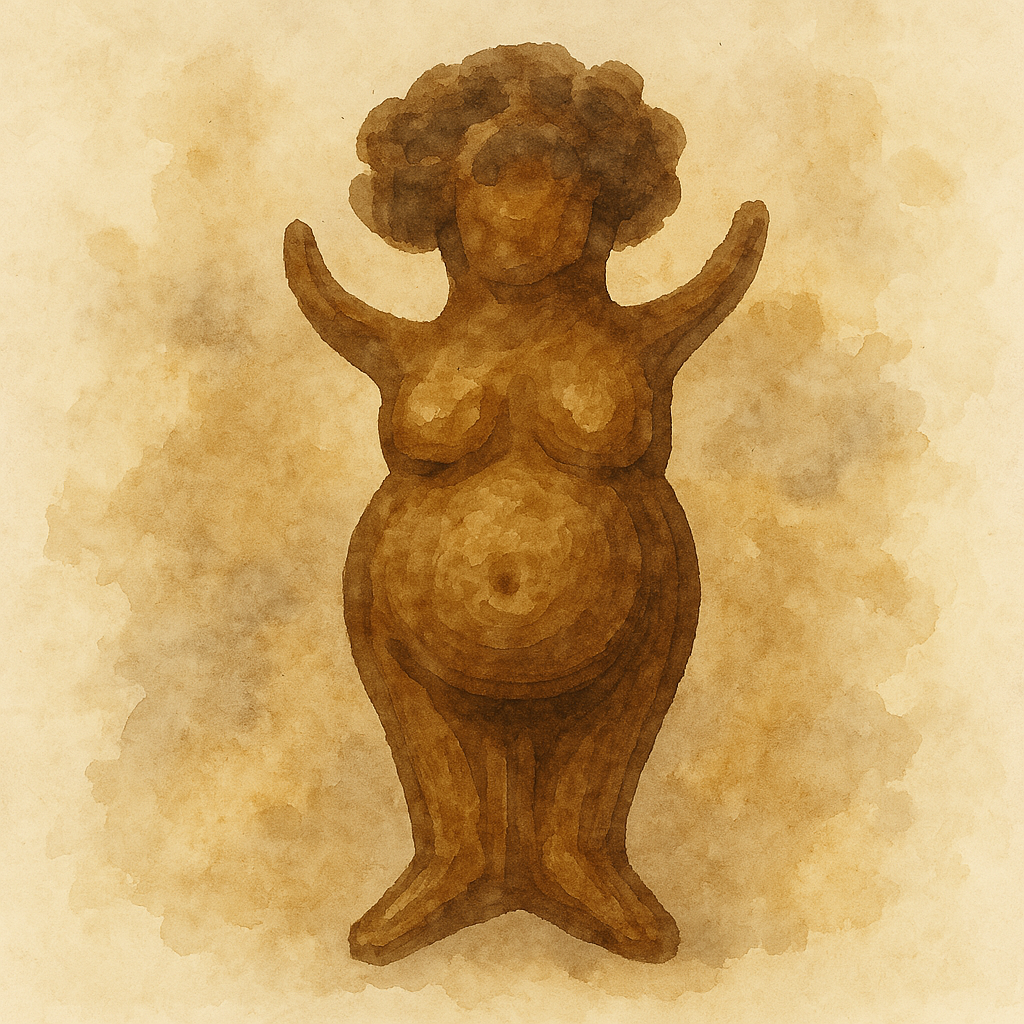The Wombwood
Journal Entry I: The Primordial Cradle of Elvendom "Wombwood"
Aien Ballen, Contract Archaeologist to the Dragon Imperium, Year 5330 of the Third Cycle
Abstract
In the year 5330, I turn my inquiries to Wombwood, once venerated as the living Mother Tree that engendered all elves. Little now remains beyond myth: decaying clusters of root husks, an array of crude pictographs, and a single wooden idol carved in the shape of a gravid tree. This entry gathers every fragmentary clue, no matter how tenuous, to reconstruct the origins of elvendom and to probe why so many dismiss Wombwood as mere legend.
Introduction
Wombwood is reputed to have been both womb and seed, self-impregnating to birth the elves who drank sunlight instead of water. According to fragmentary lore, her colossal fecund form sprawled across the ancient Sheywild. In the time before the cataclysm that brought about the close of the Second Cycle, there was a violent upheaval that swallowed her realm, apparently fragmenting her vitality into two currents: one of exuberant life, the other of anguished shadow.
Surviving Evidence
No intact grove or fossilised trunk survives. What remains are massive tangles of root husks, clumped in a handful of remote locations and now brittle as bone. These hollowed remains suggest a once-vast network of living veins, yet yield no wood suitable for dendrochronology or sap analysis. Along cavern walls in three disparate sites, one finds rudimentary pictographs (Exhibit A): stick-figure elves reaching toward a stylised tree crowned with swollen orbs. The final testament is a single wooden idol (Exhibit B), rough-hewn but unmistakable, shaped like a heavily gravid tree, its bulbous trunk and pulsing breasts capturing Wombwood’s role as mother and midwife.
Cultural Emanations
From these scant vestiges, one infers a profound duality in early elven belief. The root husks evoke a people who saw themselves as grafted to their Mother Tree, while the pictographs hint at rituals of reverent supplication before a living goddess. The wooden idol, with its exaggerated fertility motifs, implies a cult of bodily veneration, one that honoured Wombwood’s physicality as much as her spirit. As surviving lore asserts, the catastrophic release of her life force transformed the surrounding Sheywild into corridors of gargantuan flora, even as the echo of her agony crystallised into the shadow-touched strains of later subraces.
Hypotheses and Speculations
Given the near-total erosion of physical proof, we must rely on conjecture. I propose that Wombwood’s self-impregnation endowed early elves with adaptive plasticity, a botanical legacy permitting rapid environmental attunement once they dispersed. The uneven distribution of root husks may mark sites where she once fixed her growth, their current desolation reflecting the ravages of cataclysm rather than mere time. The idol’s raw, almost visceral depiction of pregnancy suggests that Second Cycle elves experienced corporeal metamorphoses during gestation, an echo of their plant-fauna hybridity now lost to mortality. Finally, the bifurcation of her essence into Life and Anguish likely set the foundation for divergent lineages, some celebrating exuberant renewal, others brooding over loss and decay.
Conclusion
Though tangible remnants of Wombwood’s existence are reduced to scattered husks and crude imagery, the interplay of root clusters, pictographs, and the idol’s fertility iconography forms a slender thread through which we may glimpse her verdant grandeur. As I continue to scour archives and petition private collectors for lost relics, I remain convinced that the Mother Tree’s memory, no matter how faint, still pulses beneath our feet. Should future discoveries align with these conjectures, the elves of the Third Cycle might at last reclaim a heritage all but swallowed by myth.





Comments